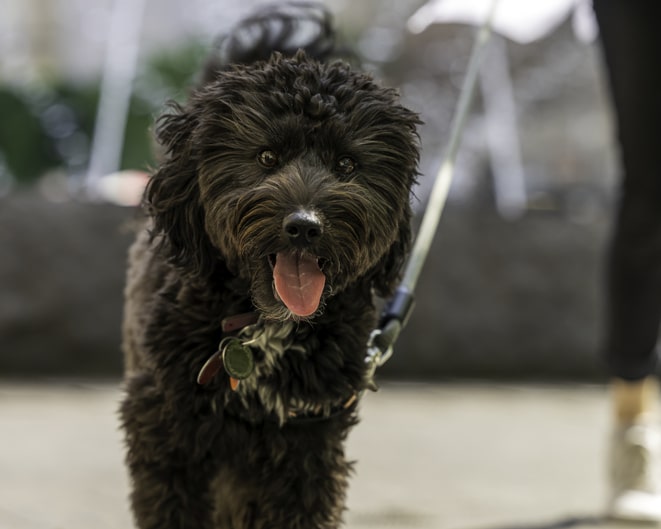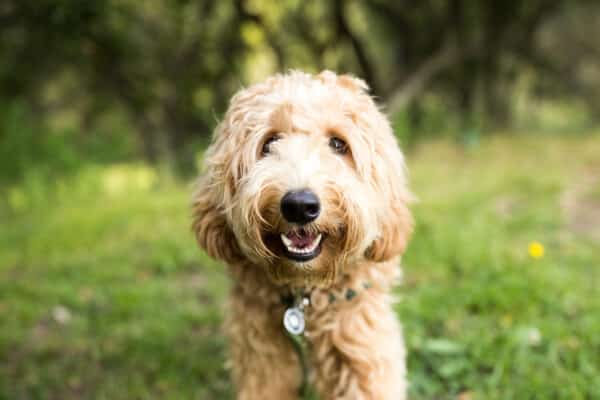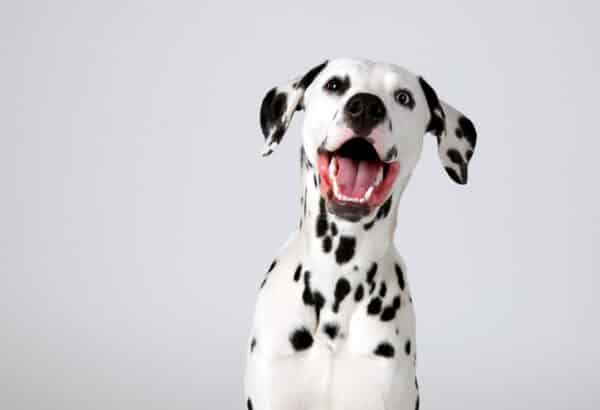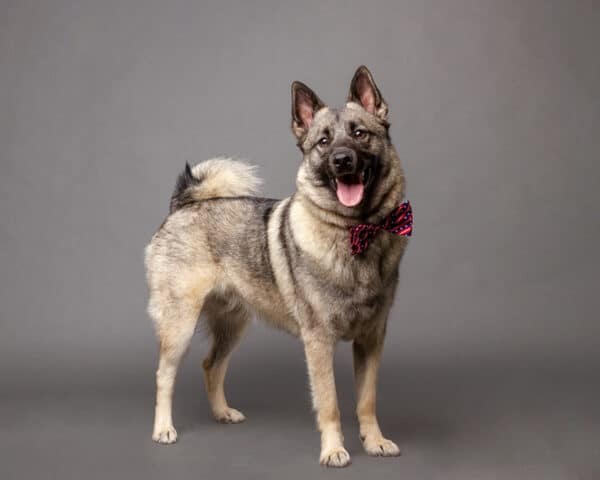An Aussiedoodle is a hybrid of an Australian Shepherd and a Poodle. Aussiedoodles were first intentionally bred in North America in the late 1990s or early 2000s. Aussiedoodles are extremely intelligent, energetic dogs. They aren’t for couch potatoes, but they can be great for active families who want a companion for long walks, running and hiking. They have a life expectancy of 10 to 13 years.
So, if you want a playful, loyal, athletic dog, an Aussiedoodle can be the right dog for you.
Aussiedoodle Personality Traits
To understand how to best train an Aussiedoodle, let’s look into the personality traits of the parent dog breeds to get an idea of what the Aussiedoodle temperament can be like.
Australian Shepherds are agile, athletic herding dogs who need a job. They are loyal, bold dogs with a strong work ethic. Aussies can be standoffish with new people at first. If not given appropriate tasks, they can become destructive, territorial and herd anything that moves. They have slightly wavy double coats.
Standard Poodles were originally bred as hunters to retrieve waterfowl. They have thick, curly fur that requires regular clipping and brushing. Poodles are very loyal to their family, friendly with people and dogs and highly intelligent. Very active and agile, they need regular outlets to expend their energy.
Aussiedoodles take on the characteristics of both Poodles and Australian Shepherds, depending on which parent dog breed has the dominant genes.
Aussiedoodle traits can include:
- Extremely intelligent and fast learners
- Agile, athletic with strong work ethic
- Retrievers who love water
- Herders of people and moving objects
- Playful and fun
- Sociable with people and dogs
- Devoted to their pet parents
- Sometimes overly protective and territorial
- Likely to test boundaries
Aussiedoodles require a job and can get bored and destructive without one. They need physical and mental exercise. If you have an Aussiedoodle, make sure to do the following:
- Socialize him to new events, people and dogs
- Take him hiking or running
- Take him on long walks
- Provide enrichment activities such as puzzle toys
- Consider getting involved in rally, obedience, agility, dock diving or field events
How to Train an Aussiedoodle
Being as intelligent and driven as they are, it’s crucial that the training is challenging and not boring. If it’s too repetitive, the Aussiedoodle may shut down. Keep the training exercises fun and exciting. Of course, use positive reinforcement. As a baseline, teach the following:
- Attention to name and a “look” cue. His herding and hunting drives will otherwise lead to him being distracted.
- Loose leash walking (“Let’s go” cue). He must learn to not to herd moving objects and people.
- Recall and emergency recall and “Leave it” cue. Because of an Aussiedoodle’s hunting and herding drives, it’s essential that he comes to you no matter what distractions there are, or he may chase and nip at passing joggers, people on bikes and skateboards, fast-moving vehicles and small animals.
- Sit, down and stay. These cues will help with impulse control for the high-driven Aussiedoodle and will help prevent jumping on people (especially for the friendly Poodle side).
- Give or drop cues. Retrieval work means he must readily release his prey.
- “Say hello” cue. This teaches your Aussiedoodle when to be friendly to other people, countering any natural territoriality and helping with impulse control if his naturally friendly poodle genes prevail.
- “Place” and “Settle” cues. Both help with impulse control of the extremely active Aussiedoodle.
All of the above cues are essential for any Aussiedoodle. And a working Aussiedoodle who’s off-leash performing obedience, rally, dock diving or field work must adhere to these cues in any distracting environment or will fail in such pursuits.
Aussiedoodles can be great companions for families who desire an active, fun dog. But you must meet the dog’s needs for him to reach his potential and not engage in unwanted behaviors. You can then look forward to all the adventures you’ll have together. And your friends will probably love him as much as you do!
Depending on whether he looks more like his Poodle or Australian Shepherd ancestors, an Aussiedoodle can be solid colors like his Poodle ancestors, or merle or tricolor like his Australian Shepherd ancestors. He may have curly, medium or long hair, which requires regular grooming. Some have a bushy muzzle with fuzzy eyebrows and merle dappling. Aussiedoodles have wooly, floppy ears. Their size depends on their Poodle ancestors (Toy, Miniature or Standard).
They usually have rounder heads and shorter, wider muzzles than Poodles or Australian Shepherds do.
- Toy Aussiedoodles usually have a Toy Poodle parent, are under 20 pounds and are 14 inches tall at the shoulder
- Miniature Aussiedoodles have a Miniature Poodle parent, range from 30 to 40 pounds and are 20 inches tall at the shoulder
- Standard Aussiedoodles have a Standard Poodle parent, are up to 70 pounds and 25 inches tall at the shoulder






